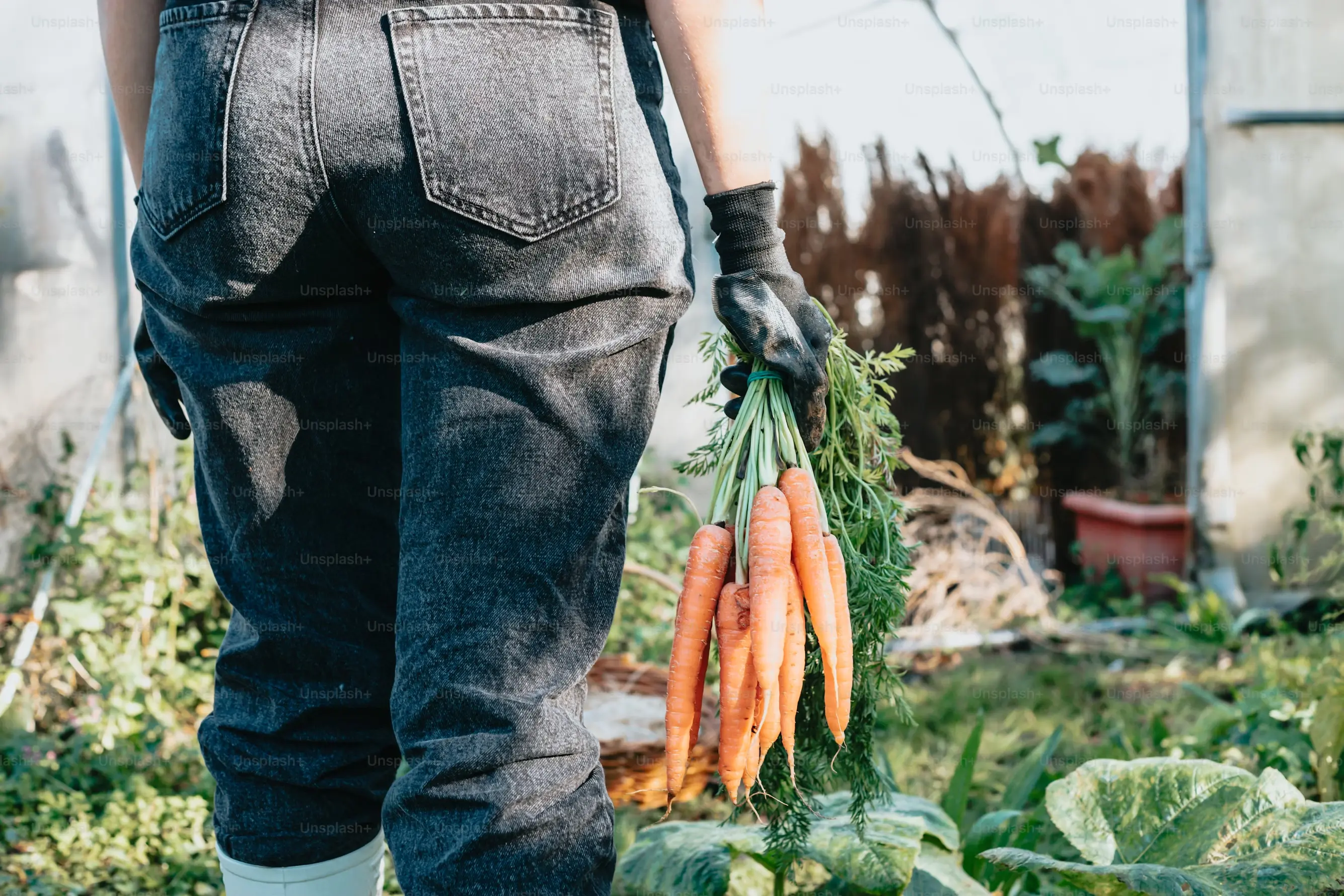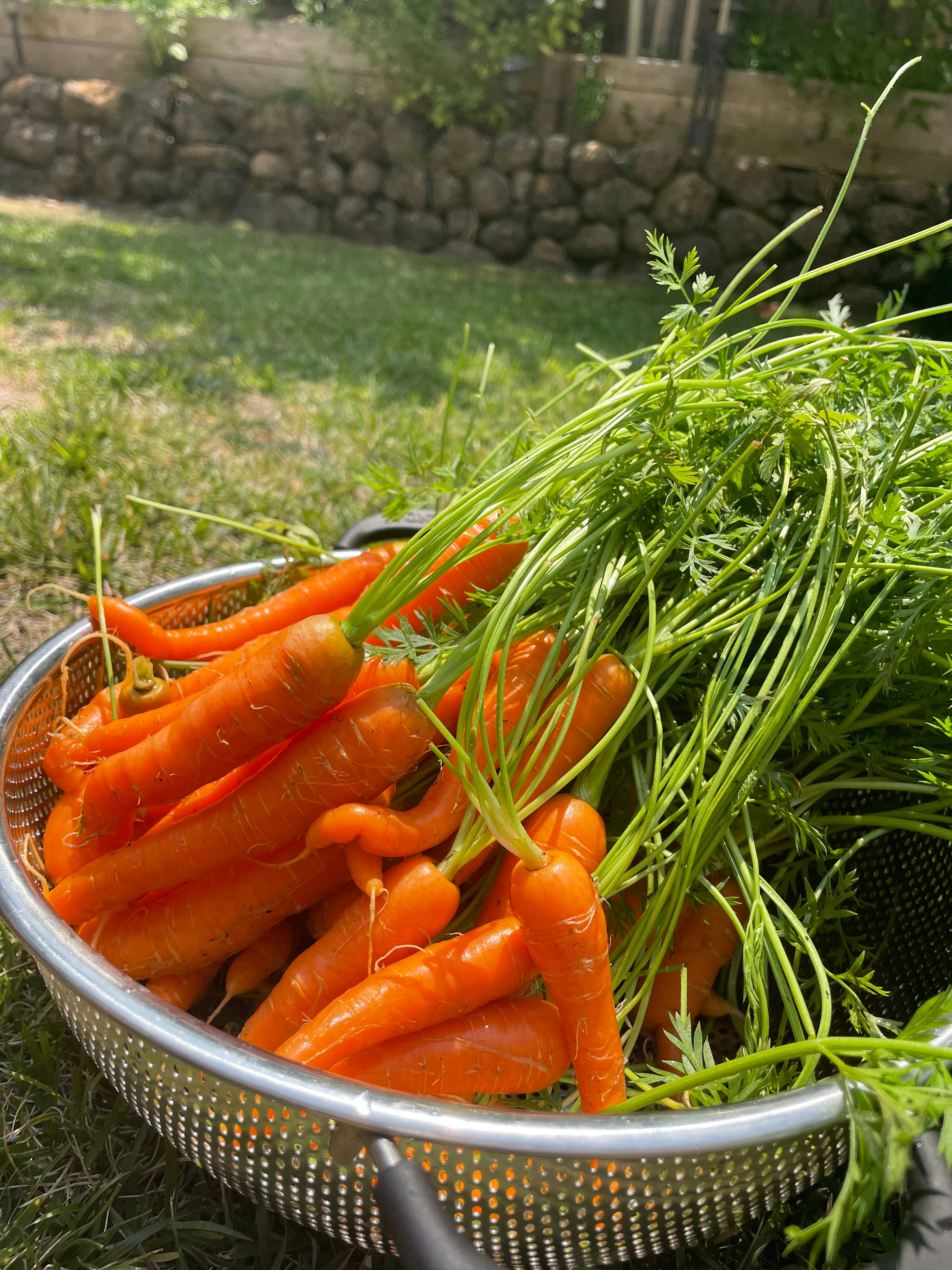Carrot
A Complete Guide to growing Carrots in the UK.
Introduction
Carrots are one of the most popular root crops for UK gardeners, prized for their sweetness, versatility in cooking, and the satisfaction of pulling up fresh roots straight from the soil. They can be grown almost year-round with careful planning, whether in open ground, raised beds, or even containers. Most gardeners sow directly from seed, and with succession sowing you can enjoy a steady supply from early summer right through to winter.
Types and Timing
Carrots come in different shapes, sizes, and colours, ranging from traditional long orange types to short, round varieties ideal for containers.
Early varieties: Fast-maturing types like ‘Amsterdam Forcing’ can be sown under cover from February/March for early harvests.
Maincrop varieties: Longer roots such as ‘Autumn King’ are sown outdoors from April-June for late summer and autumn harvests.
Mini/round carrots: Compact types like ‘Paris Market’ are well suited for pots or stony soils.
Coloured carrots: Varieties in purple, yellow, or white add variety and visual appeal.
Succession sowing: Sow every 3-4 weeks from March to July for a continuous harvest.
Overwintering: With protection (cloches, fleece, or cold frames), some varieties can be left in the ground for lifting as needed.
Site and Soil Requirements
Carrots thrive in light, well-drained soil with plenty of sun.
Soil: Loose, stone-free sandy loam is best to prevent forked or twisted roots. Avoid freshly manured soil, which can cause splitting.
pH: Neutral to slightly acidic (6.0-6.8).
Fertility: Moderate - too much nitrogen produces leafy tops at the expense of roots.
Drainage: Raised beds help where soils are heavy.
Containers: Ideal for short-rooted or round varieties. Use a deep pot (at least 25-30cm) filled with free-draining compost mixed with sand.
Propagation & Planting
Carrots are almost always direct sown outdoors, as they dislike transplanting.
Sowing depth: 1cm deep, rows 15-30cm apart.
Spacing: Thin seedlings to 5-8cm apart depending on variety.
Indoor sowing: Rarely done, but modules can be used for round varieties—ensure minimal root disturbance when planting out.
Hardening off: If starting under cover in February/March, acclimatise plants before transplanting outdoors.
Growing & Maintenance
Carrots are low-maintenance but benefit from steady care:
Watering: Keep soil evenly moist, especially in dry spells. Avoid sudden heavy watering, which can split roots.
Weeding: Essential, as carrots dislike competition. Weed by hand to avoid damaging roots.
Fertilising: Generally unnecessary if soil is prepared well. Too much feed leads to excess foliage.
Thinning: Essential for root size, but do it on still evenings to avoid attracting carrot fly.
Protection: Use fine mesh or fleece to deter carrot fly. Raised beds at least 60cm high also reduce risk.
Harvest and Post-Harvest
Harvest timing: Early carrots are ready in about 10-12 weeks, maincrop varieties in 16-20 weeks.
Cues: Roots should be finger-thick or more. Gently pull to test size.
Harvesting: Loosen soil with a fork to avoid snapping roots.
Storage: Maincrop carrots can be lifted in autumn and stored in damp sand in a cool shed, or left in the ground under fleece for winter lifting.
Troubleshooting & Pests
Carrot fly: The most common pest; deter with fleece, mesh barriers, or by companion planting with onions and leeks.
Forked roots: Caused by stony or freshly manured soil.
Splitting: Often due to irregular watering.
Green tops: Roots exposed to sunlight; earth up slightly to cover.
Fungal diseases: Rare but can occur in waterlogged soils. Ensure good drainage.
Tips from Growers / FAQs
Q: How do I avoid carrot fly?
Sow resistant varieties (‘Flyaway’), use mesh covers, and thin in the evening.Q: Can I grow carrots in containers?
Yes - choose short-rooted types and ensure pots are deep enough.Q: Why are my carrots small?
Overcrowding or poor soil preparation. Thin seedlings early.Seasonal tip: Early sowings under fleece give a head start and reduce pest pressure.
Resources & References
RHS - Grow Your Own Carrots
BBC Gardeners’ World - How to Grow Carrots
Allotment & Gardens - Growing Carrots
Tags
© What to plant 2025. All rights reserved

